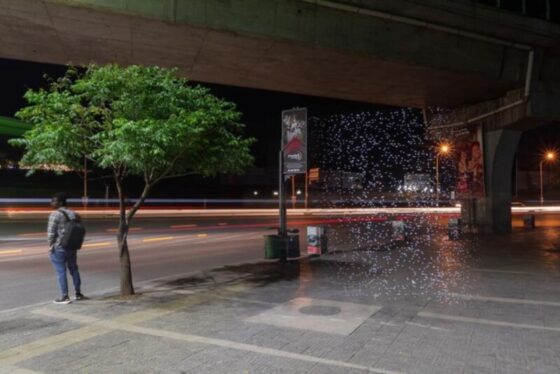
Enlarge / Light painting reveals a cloud of particulates on Airport Road, Addis Ababa, Ethiopia (PM2.5 10-20 micrograms per cubic meter). (credit: Robin Price)
Light painting is a technique used in both art and science that involves taking long-exposure photographs while moving some kind of light source—a small flashlight, perhaps, or candles or glowsticks—to essentially trace an image with light. A UK collaboration of scientists and artists has combined light painting with low-cost air pollution sensors to visualize concentrations of particulate matter (PM) in select locations in India, Ethiopia, and Wales. The objective is to creatively highlight the health risks posed by air pollution, according to a new paper published in the journal Nature Communications.
“Air pollution is the leading global environmental risk factor,” said co-author Francis Pope, an environmental scientist at the University of Birmingham in the UK who spearheaded the Air of the Anthropocene project with artist Robin Price. “[The project] creates spaces and places for discussions about air pollution, using art as a proxy to communicate and create dialogues about the issues associated with air pollution. By painting with light to create impactful images, we provide people with an easy-to-understand way of comparing air pollution in different contexts—making something that was largely invisible visible.”
Light painting has been around since 1889, when Étienne-Jules Marey and Georges Demeny, who were investigating the use of photography as a scientific tool to study biological motion, created the first known light painting called Pathological Walk From in Front. In 1914, Frank and Lillian Mollier Gilbreth tracked the motion of manufacturing and clerical workers using light painting techniques, and in 1935, Man Ray “signed” his Space Writing series with a penlight—a private joke that wasn’t discovered until 74 years later by photographer/historian Ellen Carey in 2009.
Read 9 remaining paragraphs | Comments


